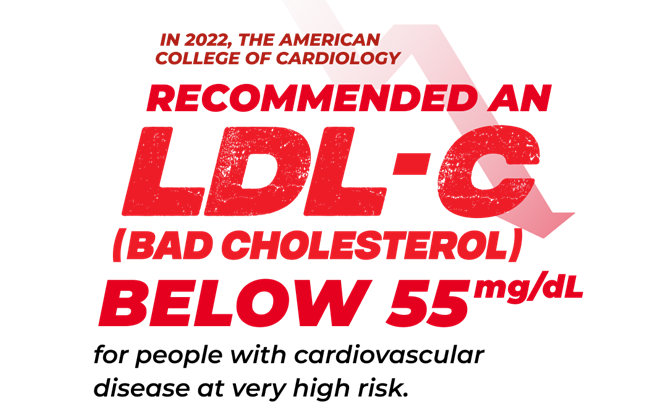You are about to go to a website for healthcare professionals.
This information is intended only for healthcare professionals in the US. If you are a healthcare professional, click “I agree” to continue.
If you click “Continue” below, you will leave the current site and be taken to a site maintained by a third party that is solely responsible for its content. Amgen provides this link as a service to website visitors. Amgen is not responsible for the privacy policy of any third-party websites. We encourage you to read the privacy policy of every website you visit.

Making lifestyle changes like diet and exercise

Starting a statin (as prescribed)

Adding a nonstatin (as prescribed)
It is widely believed that diet and exercise are enough to lower LDL-C (bad cholesterol), but for some people, diet and exercise may not be enough to achieve recommended levels. That’s when prescription medications like statins may be added. In some cases, other medications may be needed in addition to a statin to help lower LDL-C even more. Talk to your doctor about whether these medications may be right for you.
Cholesterol plays a big role in your health. High LDL-C (bad cholesterol) is one of the most important factors you can control to reduce the risk of a heart attack or stroke. If you have cardiovascular disease and are at very high risk for a heart attack or stroke, the American College of Cardiology recommends an LDL-C level of less than 55 mg/dL. Talk to your doctor about what your recommended level could be.



Only a blood test can show if your LDL-C is high or within a recommended level. Everyone’s recommended level is based on their medical history and certain risk factors. Get tested and talk to your doctor about what your recommended level should be, and how to get there.
Know more about your risk of having a heart attack or stroke by knowing your LDL-C (bad cholesterol) level.
The 2023 American Heart Association survey conducted by The Harris Poll found that while 75% of people who have had a heart attack or stroke have high cholesterol, almost half (47%) didn't know their LDL-C number.*
*503 US adults surveyed.

Medical societies have provided some general guidelines for how often LDL-C should be tested. Always talk to your doctor about what frequency might be right for your situation.
| In 4-12 weeks | Every 3-12 months | Every 4-6 years | |
|---|---|---|---|
| My doctor has recently made changes to my cholesterol-lowering medications | |||
| I’ve recently started a new cholesterol-lowering medication | |||
| I’m on a cholesterol-lowering medication and my doctor has made no changes to my treatment plan | |||
| I’m at least 20 years old with an ideal range of LDL-C levels and I am not on cholesterol-lowering medication |